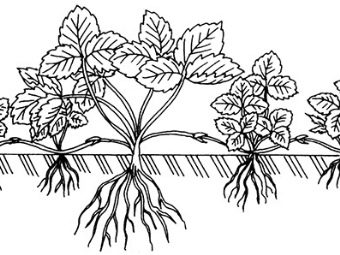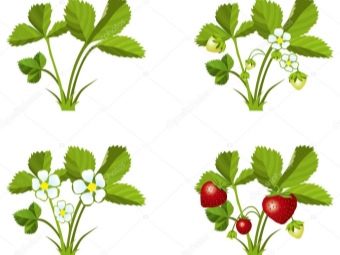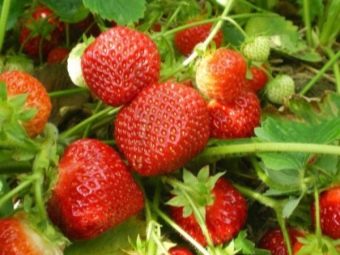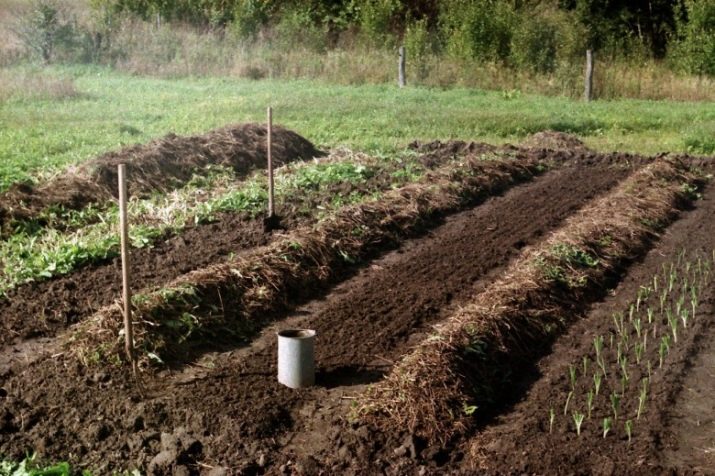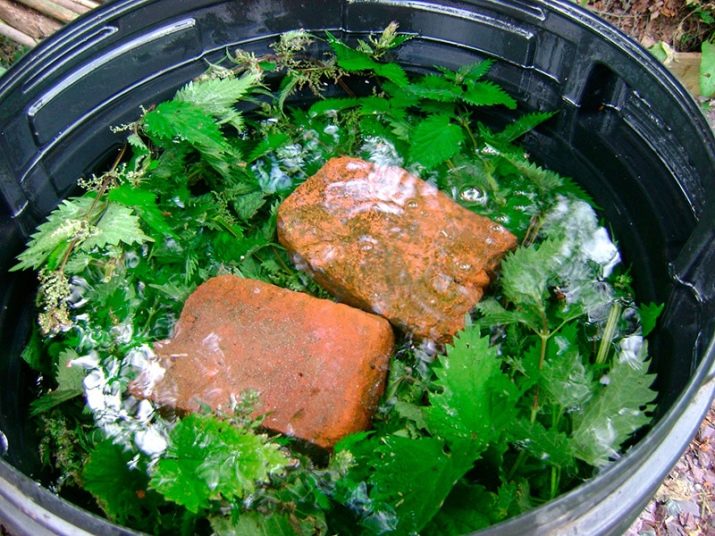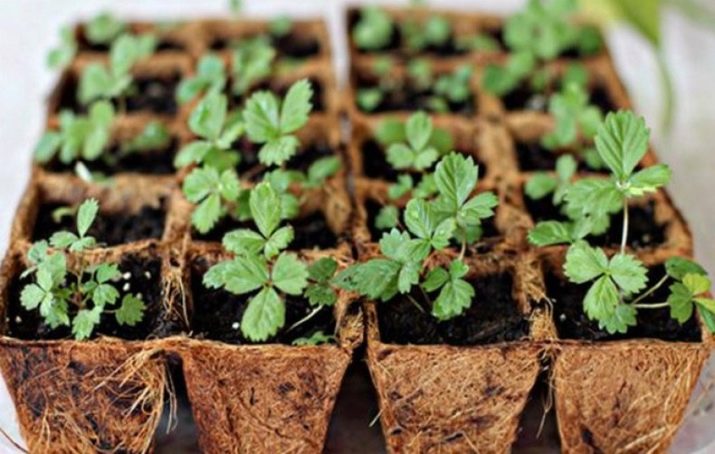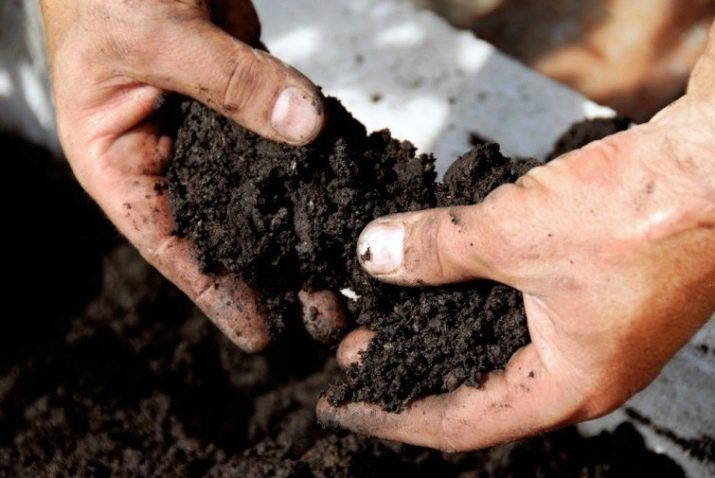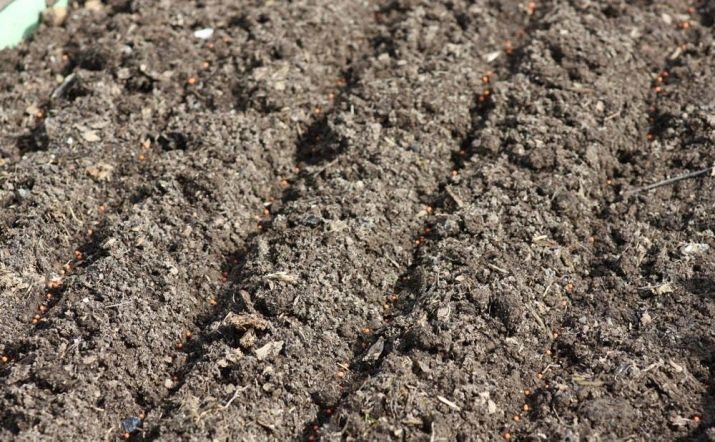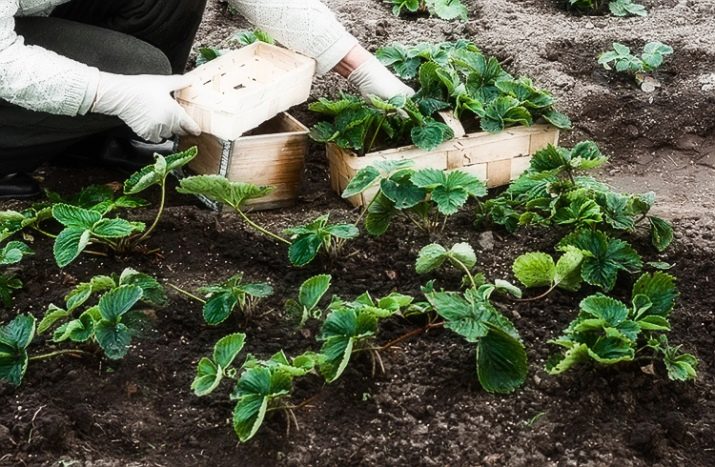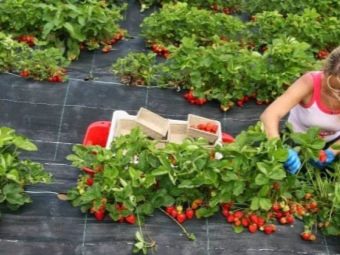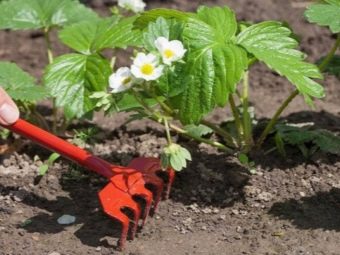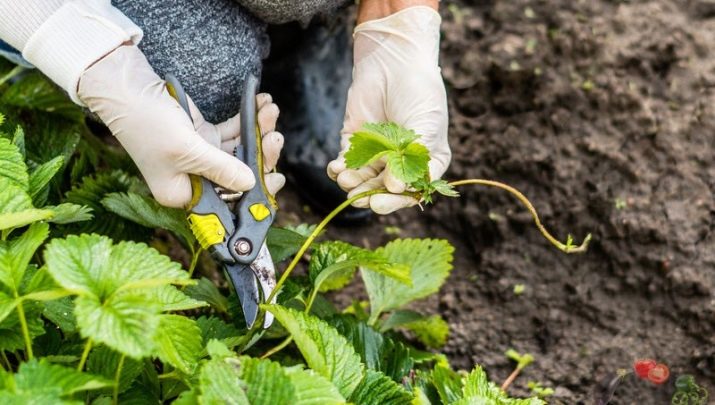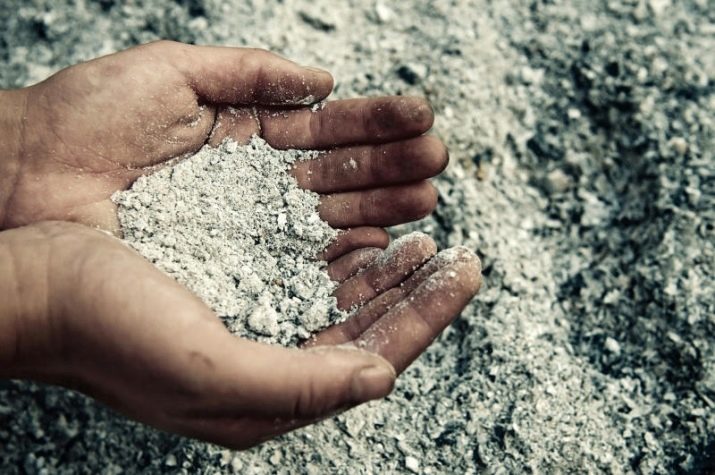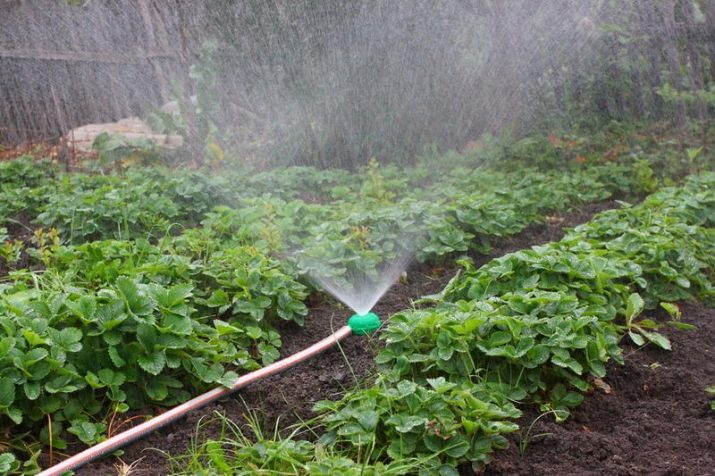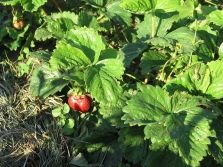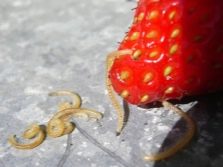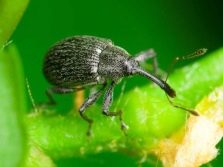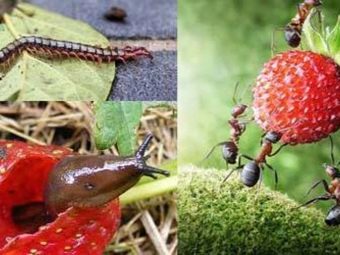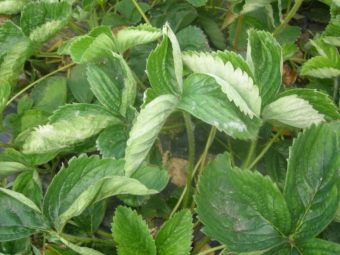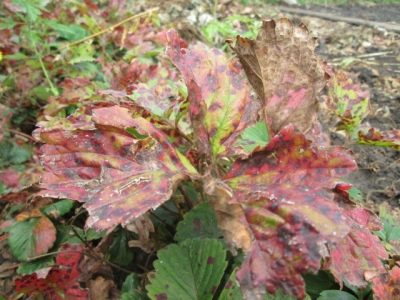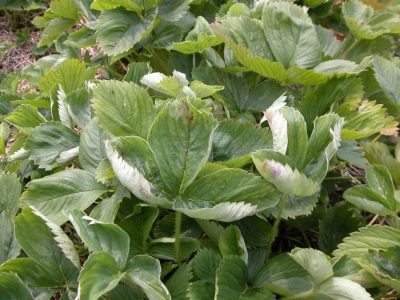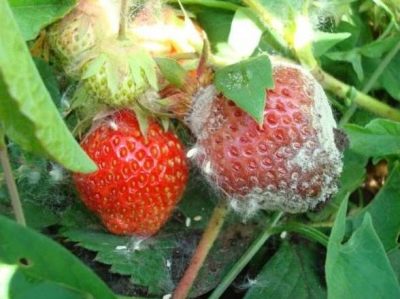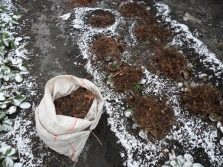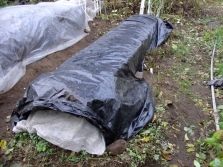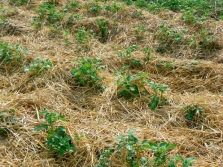Features planting and care for strawberries
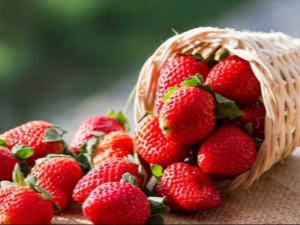
Many people do not want to eat purchased berries and grow them on their own plots.One of the most popular crops is considered to be sweet and rich strawberries. It can be found in many gardens. However, the really tasty and juicy berries of Victoria give only well-groomed and properly planted bushes. Today we will look at how strawberries should be planted and how to care for them properly.
Optimal timing
Before embarking on planting strawberries, it is worth figuring out when it is best to do this. It should be borne in mind that the optimal time for planting strawberries directly depends on its particular variety. For example, for the early and remontant types of this culture, the dates will differ.
The development of the root system of Victoria goes in waves. Thus, the first stage of rapid growth usually occurs in early spring. Strawberries are most effective when they grow in warm enough soil, the temperature of which is +9 or +10 degrees. The next active phase takes effect after the fruiting process. It is gradually fading away in July, when the maximum temperature indicators for the summer are held outside.
There is another phase of strawberry growth. It falls on the end of August and the beginning of September. During this autumn period, the soil temperature gradually decreases and reaches the level of +20 degrees. For this reason so It is important to refer to appropriate agricultural practices aimed at normalizing the temperature parameter of the earth. This may be drip irrigation or mulching. With such techniques, the root system will develop almost continuously, and the second and third phases will become one.
As for the early varieties of strawberries, their fruit buds are laid at temperature values of +16 or +18 degrees (in conditions of short daylight hours). New plants begin to be created only after the fruiting process - at this time the antennae make their way through, fresh outlets appear. This usually happens in June or July. Fresh sprouts take root only in July-August. Bookmark and differentiation of the kidneys usually takes place in September-October. Closer to the winter season strong leaves grow with a leathery surface - they still have to endure frosts. The roots, which were formed in the fall, live about 7-9 months, that is, from August to April. They will act as the basis for a new crop.
Because of this, if we decide to plant Victoria in August or September, we will be able to realize the potential of the chosen culture by 100%, since the root system will have time to fully develop.
As for remontant varieties, they form buds regardless of the time of daylight. They are recommended to be planted in April-May. If you choose a spring planting, the active fruiting of the crop will be in the second half of the summer season. If you plant planting varieties in the fall, there will be few advantages from this - you will only have to cover the plant, since these types of strawberry bushes are very thermophilic.
Contrary to popular belief, many experts and experienced gardeners strongly recommend not to plant Victoria in the summer. This is due to the fact that seedlings can not withstand heat and heat.
Training
Before planting strawberries on your plot, you need to properly carry out the preparatory work. Moreover, it will be necessary to prepare not only plants, but also land. You can not neglect this stage, otherwise you can not wait for a good harvest - you just waste time and energy. Consider step by step instructions on how to prepare all the necessary components.
Seedling
Transplanting berry seedlings should be carried out on an overcast day - it should not be hot outside. It is better to get acquainted with the weather forecast for several days in order to plan everything. An hour and a half before transplanting the bush should be thoroughly watered. You can use not only ordinary water, but also a warm solution of humus (not too strong) or herbal tincture of the same temperature.Further, when the seedlings have already been dug out, its rhizomes will need to be soaked in a specialized composition for 1.5-2 hours. Today, several popular solutions are used, addressed by many garden and garden owners.
- Biostimulant growth. The use of this tool is considered the easiest. To do this, buy a certain growth stimulant and insist in it seedlings. This solution is especially suitable for those who can independently choose the optimal composition.
- Sourdough on herbs. There are several topical recipes for the preparation of such feeding. For example, nettle and green parts of legumes can be used. They are poured with warm water, covered with double superphosphate and left to ferment. Typically, the preparation of this natural composition takes about 1-2 weeks. The content of this solution will contain nitrogen, potassium, phosphorus. It is possible to soak the seedlings in it, and later use it as a top dressing.
- Garlic solution. With the help of garlic you can scare off planting from various insects. It is crushed, added to warm water, and then soaked in the resulting composition of the roots of the plant.
Choosing young bushes for transplanting, it is worth considering some important parameters.
- Each leaf should have 3-5 leaves (fresh and without spots / damage).
- Rhizomes should be neat and straight, devoid of putrefactive traces. The density should be medium.
- The length of the roots of seedlings should not be more than 10-12 cm. If the rhizomes are longer, then they need to be shortened independently with scissors. Tear off their hands is prohibited.
There are 2 methods of harvesting seedlings - from tendrils or seeds. It is advised to resort to the use of sunflower seeds only if you wish to grow a new variety on your plot. When growing seedlings from seeds, it is better to use wet sand with fertilizers. The latter must be decontaminated if you have collected it from the forest. Make it possible by heating the sand in the oven.
When growing strawberries from tendrils, it is necessary to select well-grown and dense bushes, on which mustaches will be grown in the future. In the spring from such bushes it is necessary to cut off all the ovaries, so that they can multiply vegetatively. In July, you will need to choose 1-2 sockets with each antenna.
Approximately 1.5-2 weeks before the outlet will need to be carefully separated from the mustache, so that the seedlings are more likely to adapt to a new place.
The soil
Properly preparing the seedlings for future planting, you can proceed to the preparation of the soil. Be sure to need to choose a suitable site for planting. Earth should be located in a well-lit place, because Victoria loves him very much. Without sufficient lighting, the fruits will not grow large and juicy, but their sweetness may suffer from it. In addition, there will not be a good harvest of strawberries in the shade.
You also need to pay attention to the moisture level of the soil in which you plan to plant the culture. Victoria loves water, but it should not be too much. In wetlands berry will grow very badly. The groundwater level should be no closer than 1.5 m from the surface. In addition, the soil should be loosened (but not too), fertile and have a neutral acid level. In the case when its acidity is high, before planting, you will need to supplement it with calcium fertilizers or turn to the use of hydrated lime. To reduce the acidity of the earth, it is permissible to use cement waste, since they also contain calcium.
It is important to take into account the fact that the plants previously grew in the selected area. Victoria will not be able to "live" in those places where sunflowers, cabbage or other nightshade grew earlier.
Even proper tillage will not help.But if carrots or parsley used to be in the designated place, then strawberries can be planted there boldly - it will become good to develop.
Before disembarking Victoria, the soil will need to be properly processed. The pre-selected area will need to dig up to the depth of the bayonet, and then carefully remove weeds from its surface. The first cop should be held in October / November, and the second - in spring or summer before planting the culture. It will take a good loosen the ground, otherwise the rhizomes will be problematic to germinate. Victoria does not grow well in overly dense soil.
Be sure to remove all weeds. It is advisable to do it with your hands - you should not use herbicides, because they can harm the seedlings. To get rid of weeds should be in several stages. First, the weed grass is removed by hand (if it is not too much), they are engaged in digging the ground, after which they proceed to harvesting the remaining roots. If the weeds have grown in a selected area very thickly, then they will need to mow. Then they dig up and loosen the earth, and in the end they destroy the roots with the help of a rake. To conduct such work is desirable in the fall. In spring, you can dig up the ground again, removing the remaining inclusions.
Fertilize the soil well before planting strawberries. Feed should not be too little, and not too much. You can add a combination of organic and mineral fertilizers. But do not overdo it with organic matter, otherwise plants can later become “targets” for fungal diseases.
Planting bushes
The plan of planting strawberries in open ground is quite simple and clear. Planting bushes should be made on an overcast day, when the weather is not very hot outside. It is permissible to do this in the evening. Be sure to water the seedlings an hour before planting. It is advisable to wet the seedling material in water or a special biostimulator according to the scheme described earlier.
Please note - a healthy seedling should have 3-4 strong leaves and sufficiently expanded rhizomes. Now you need to fix each strawberry bush in such a way that its growth point is at the same level with the top of the bed, and the root system is spread out along the edges of a previously prepared hillock.
Further, gently supporting the bush, it is required to fill it with previously prepared soil and immediately water it. This is done in order to maximize the effective interaction of roots and soil. It is required to make sure that the growth point is not deepened too much or was too much “bullied” above the ground.
Victoria should be placed very carefully and carefully. Do not make too sharp movements. Try not to damage the seedlings.
Care
Do not think that work with Victoria ends on her landing. In the future, this crop will require careful care, without which you will not have to rely on a good harvest. Consider step by step, how will you need to care for strawberry bushes so that it grows healthy and gives rich yields.
Mustache trimming
If you want strawberry bushes to give a good and rich harvest with large and sweet fruits, then you should cut off all mustaches from them twice a season.
The first time to carry out this procedure will be needed at the very beginning of the growing season. This is necessary so that the plant does not expend extra forces on the growth of antennae, but sends all the nutrients into the formation of high-quality berries. If you neglect such a simple procedure, the berries, of course, ripen, but they will be small and grow in small quantities. Yes, and their taste will be far from ideal.
The second time strawberry mustache will grow at the end of the fertile period. This time they will need to be cut again, and at the very base. But keep in mind that Shoots are usually quite strong, so the antennae can never be pulled out by hand. Otherwise, you risk wresting the shrubs along with the roots.
Pruning is permissible to produce only a special garden shears or scissors with sufficiently sharp blades.
Top dressing
We must not forget that freshly planted strawberries always require mulching. Most often for these purposes use needles. This component prevents the development of various plant diseases, and also repels various kinds of pests. Instead of needles it is permissible to use straw, dry grass or foliage. It is also important to remember about the proper feeding of strawberries. This stage should be taken approximately 2 weeks after the completion of the landing work.
This procedure should be carried out in spring and autumn. In addition, it is advisable to culture the crop immediately after the fruiting period (if you have not had time to deal with this matter a little bit, then you can carry out such work until the fall). Victoria's fertilizer at the end of the fruitful stage and harvesting is most often carried out using high-quality organic products. There are plenty of those, but most gardeners use mullein (manure) or chicken litter.
Wood ash is often added, which can easily replace superphosphate and potassium salt. As for mineral fertilizers, then people often stop at the previously mentioned potassium salt or urea. However, experts advise to apply to these funds in the event that you do not have organic.
Feeding will be needed for this crop after the autumn pruning process. This procedure is necessary for the cultivation of sweet fruits. After that, it is permissible to apply to the fertilizer in the form of potassium humate. Next, you need to thoroughly plow through the ground, carefully and carefully cover the garden bed and do not touch it until spring.
Of course, every summer resident chooses a dressing that he considers the best for his garden. To date, there are many options for such funds. It can be not only organic or mineral variants, but also common ammonia, iodine, yeast, nettle tincture, or even an infusion on whey, called fermented milk.
Consider for the future that young plants that are only 1 year old, can be not fertilized in the spring.
If in the course of their planting an insufficient amount of fertilizers was used, then it will not be possible to do without carrying out this procedure. Top dressing is usually put on the soil, previously cleared of any litter.
Loosening and weeding
If you cut off all unnecessary mustache from the bushes of Victoria, then you can start weeding the beds in order to get rid of annoying weeds, and also loosen the soil between the rows of the beds. It is necessary that the roots of the planted vegetation receive the necessary amount of oxygen.
Catching up with loosening, try to stay away from the rhizomes of Victoria. As a rule, they are at a shallow depth.
It is desirable to make indents from a sapling about 12-15 cm.
After loosening the land, it is permissible to pour some fresh soil under the bushes. Carrying out this stage is required so that in the process of summer growth the roots do not break out. Then a bare root can lead to the fact that the whole bush will freeze with the onset of winter cold. For the same reason, the yield in the next season may be quite low.
Watering
Watering Victoria can not be stopped, even if it has ceased to bear fruit long ago, especially if we take into account the fact that July and August are the hottest summer months, which are often quite dry. Landings in such conditions just need a good watering.
Watering strawberries is required at least once in 7-10 days.
Do not bring the situation to planting themselves began to indicate that they do not have enough watering. Bushes can noticeably wilted, the foliage will gradually dry out. However, such plantings can not be poured.
With the onset of autumn, if it starts to rain frequently, then you yourself will not need to water the berries and nature will do everything for you.But if the autumn is too dry, then you will need to moisten the bushes on your own and do it regularly, because the flower buds will depend on this.
Fight against diseases and pests
Strawberries, like many other cultures, are prone to “attacks” of various pests. In addition, this berry is quite often sick. If you do not start treatment in time, you can be left without a good harvest. Let's get acquainted with the list of ailments and parasites that can harm this plant.
- Many troubles Victoria can bring strawberry mite. As a rule, this insect eats young landing leaves. Preventive procedures are usually carried out during the growing season before the start of flowering, and then after the harvest.
- Another strawberry problem is recognized as strawberry nematode. When it is young leaves grow crooked, and cuttings - short and deformed. A nematode is both a type of damage to a plant and a pest. In order not to face such a problem, you need to use only the health of the seedlings. The affected parts will need to dig up with the roots and burn.
- Often, strawberries are attacked by a raspberry-strawberry weevil. To save the plant from this parasite, it is necessary to spray isolated buds with a 0.3% carbofos emulsion (50%). It is also permissible to turn to the treatment of popular tools such as "Decis" or "Spark".
- Snails, ants and millipedes can seriously harm the berries themselves on the bush. These parasites especially like shady places and humus soils. In order not to collide with them, strawberry beds should be treated with metaldehyde (3-4 g per sq. M) before flowering and after the last harvest.
- About the same damage to the berries can cause spider mites. You can get rid of it if you treat bushes with karbofos (3 tablespoons of a substance per 10 liters of water). It is necessary to start spraying immediately after collecting the final batch of the crop.
As for the diseases of Victoria, here are the most common ones.
- Spotting There are several types of this disease. However, brown spotting is most often seen when foliage and sepals are covered with characteristic spots of dark purple color. Then on the tumors appear dark pillows with fungal spores. If the leaves are affected too much, they turn purple and die. In order to get rid of this problem, it will be necessary with the melting of snow to remove all the old foliage, and to process the bushes with bordeaux liquid before the growing season.
- Mealy dew. The harm this disease can cause depends on when it occurred. If the berries are already harvested, the disease is possible to keep under control, using fungicides. If the fruits are still ripening, then not only the whole harvest can die, but the sprouts themselves. Before the flowering period comes, as well as immediately after collecting the fruits, it will be necessary to spray the beds with a soap-copper emulsion (with the calculation of 30 g of vitriol and soap on 10 liters of water). You can then turn to acetone (20 g per 10 l of water) and Topaz (5 g per 10 l of water).
- Gray rot. This disease can ruin almost all the fruits on the plants, especially if there is enough frequent rainfall in the yard. When it appears on the berries appear soft brown spots with a fluffy patina. Affected fruits begin to dry out, and then mummified. In order not to face such a problem, it is important to follow the rules of crop rotation. Do not let the weeds grow. In time, remove ripe berries, destroy already sick parts. Mulch the ground. You can handle planting Bordeaux liquid before vegetation.
Preparing for the winter
Strawberry bushes must be properly prepared for the winter (your place of residence does not affect the conduct of these works - planting must be protected, even if you are in the middle lane where winter temperatures are not extremely low). They must be covered. And it is necessary not only to create heat, but also to contain additional snow.In the role of shelter, straw is usually used, which is also a good fertilizer, or spunbond is a special covering material.
It is also permissible to replace straw with options such as peat or compost. You can use the leaves or stalks of corn.
However, it must be remembered that only competent care will allow the planted berry bushes to seamlessly survive the winter and subsequently give a good harvest.
How to care for strawberries can be seen in the next video.

